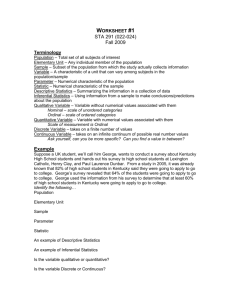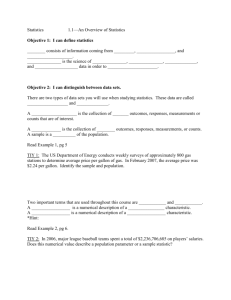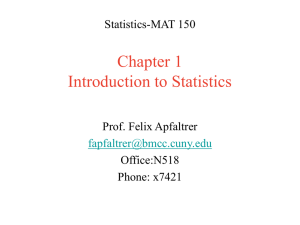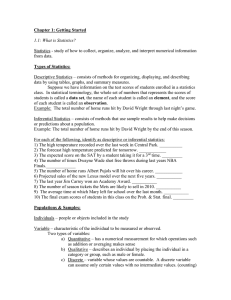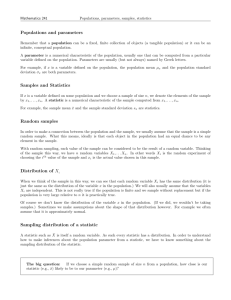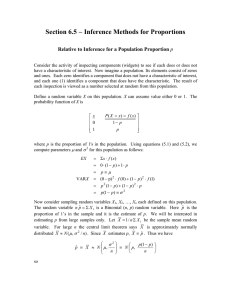MATH 10043 CHAPTER 1 DEFINITIONS
advertisement
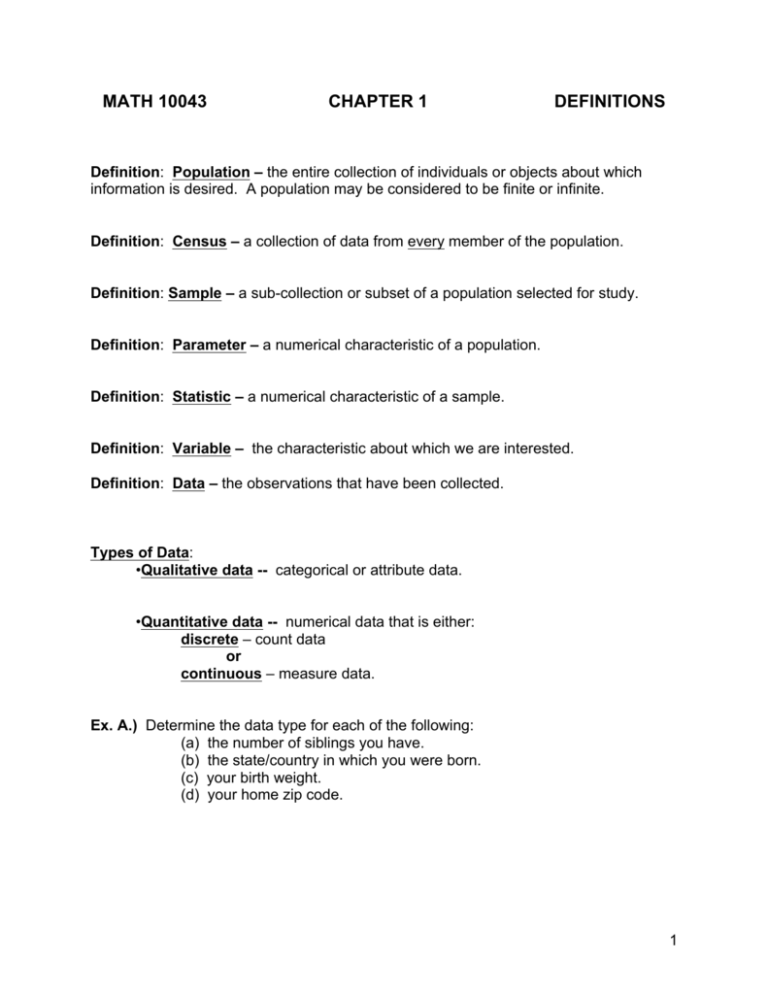
MATH 10043 CHAPTER 1 DEFINITIONS Definition: Population – the entire collection of individuals or objects about which information is desired. A population may be considered to be finite or infinite. Definition: Census – a collection of data from every member of the population. Definition: Sample – a sub-collection or subset of a population selected for study. Definition: Parameter – a numerical characteristic of a population. Definition: Statistic – a numerical characteristic of a sample. Definition: Variable – the characteristic about which we are interested. Definition: Data – the observations that have been collected. Types of Data: •Qualitative data -- categorical or attribute data. •Quantitative data -- numerical data that is either: discrete – count data or continuous – measure data. Ex. A.) Determine the data type for each of the following: (a) the number of siblings you have. (b) the state/country in which you were born. (c) your birth weight. (d) your home zip code. 1 Definition: Sampling error -- the difference between the result of a sample and the result for the entire population. It is caused by random fluctuations of the sample – i.e., by chance. Definition: When we say that a data set is normal, we mean that it has a bell-shaped distribution. Definition: When we say that an observation is statistically significant, we mean that it is extremely unlikely to happen simply by chance. Definition: Descriptive statistics -- the collection, presentation, and description of data. Definition: Inferential statistics -- interpreting the data in order to draw conclusions about the population, based on information obtained from a sample. Practice Problems for Chapter 1 1. Identify the following as a parameter, a population, a sample, or a statistic. a) b) c) d) All grocery story customers. Twelve customers waiting in a grocery line. The average waiting time of the twelve customers. The average amount of time that grocery store customers in general wait to be served. 2. Classify the following as Q--qualitative data, D--discrete data, or C--continuous data. a) The number of times an individual has donated blood. b) An individual's blood type. c) The length of life for a light bulb. d) The number of light bulbs in a box. e) Thickness of a sheet of metal. f) A poll of registered voters as to which candidate they support. [Answers to practice problems may be found on the Even Answer Sheet.] 2

